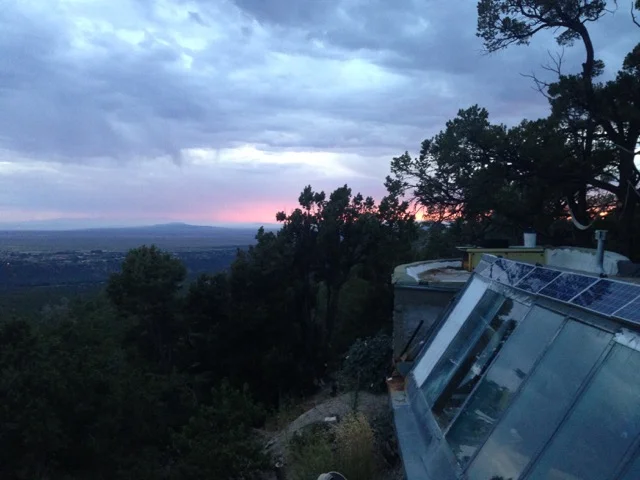Underwater Climate Change Refugees, A Glimpse into A Gloomy Future (Rev. Tom VandeStadt)
Underwater Climate Change Refugees,
A Glimpse into A Gloomy Future
...for I saw the last known landscape destroyed for the sake of the objective, the soil bulldozed, the rock blasted.
Those who had wanted to go home would never get there now.
Wendell Berry, from “Sabbath Poem II,” 1997
The International Union for the Conservation of Nature recently published a report on our planet’s oceans. For years, we’ve been burning fossil fuels, releasing heat-trapping CO2 into the atmosphere and heating up the oceans. The oceans have absorbed most of the heat that we’ve generated—90%. If that heat had stayed in the atmosphere rather than being absorbed by the oceans, the surface of the earth would’ve warmed by 36C in the past century and we wouldn’t be here today.
By absorbing our heat, the oceans have saved our lives for now, but other life forms are paying the price. We’re causing a mass migration of sea life, forcing fish and other sea creatures to leave their habitats because their water is too warm or too acidic, or there’s no longer food for them to eat or another refugee species is invading their space and eating them. These living creatures are underwater climate change refugees, experiencing the havoc, suffering and death that often precedes and accompanies mass migrations; 550 types of fish and invertebrates are threatened with extinction.
You may not think that an underwater creature like a fish or a turtle is a climate change refugee. But why not? Why do we reserve that designation exclusively for members of our own species? Why can’t we acknowledge that fish forced to migrate because of climate change are climate change refugees? That any mammal, reptile or bird forced to migrate because of climate change is a climate change refugee? All over the planet right now, we’re forcing fish, mammals, reptiles and birds to migrate because of the heat that we’re generating, with all the havoc, suffering and death that often precedes and accompanies mass migrations; over 16 million species are known to be threatened with extinction.
What impact will the warming seas have on the earth’s human population? Billions of people on earth rely heavily on food that comes from the sea. The IUCN report warns that the amount of food people can harvest from the sea in areas like Southeast Asia will drop by one-third by 2050, as the human population continues to increase. Warmer waters may contribute to an increase in disease and food poisoning, and will produce more numerous, more severe and more destructive hurricanes. Then there’s sea level rise, which will displace large numbers of people.
Dan Loffoley, one of the IUCN report’s lead authors, remarked in an article in The Guardian, “The overall outlook is pretty gloomy...We are locking ourselves into a future where a lot of the poorer people in the world will miss out.” In other words and more bluntly, a lot of the world’s poorer people have no future.
Just as underwater climate change refugees are migrating through the seas today, human climate change refugees will increasingly traverse the globe in the not-too-distant future. It’s likely that sea-level rise alone will displace millions from small island nations, Bangladesh, Egypt and every other nation on earth with sizeable populations hugging low coasts. Africa will likely suffer from increased drought, food scarcity and the disappearance of drinking water, forcing millions to move. A long-term drought could descend upon Mexico and Central America, making parts of that region uninhabitable. Most of these people from Bangladesh, Africa, Mexico and Central America are the world's poorer people. Where on earth will they go? Or will they miss out on the future?
The United Nations Refugee Agency reports there were 63.5 million displaced people in the world in 2015, a record high; that’s one out of every 113 people on earth. The International Organization for Migration estimates that by itself, climate change could create an additional 25 million to 1 billion displaced people by 2050; 200 million is the number often cited. Look at the current refugee crisis in Europe to get a glimpse of what a bigger and more chaotic global refugee crisis could look like in the future, with even more of havoc, suffering and death. A gloomy prospect, indeed.
The question is, how bright will those who bear light shine in that gloom?
##
Rev. Tom VandeStadt is pastor at Congregational Church of Austin, a leading justice advocate, and cofounder of AllCreation.org. Cover image, Fisherman, Greece, 2014, by Tom. Checkout a collection of Tom's sermons here.







